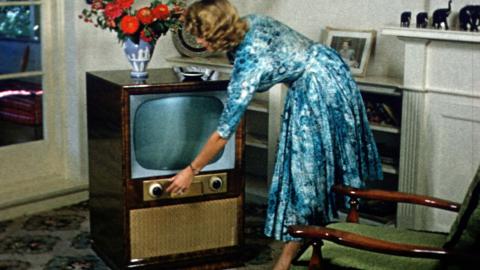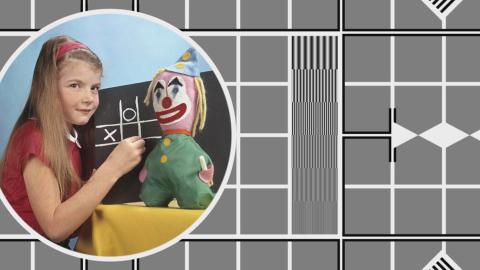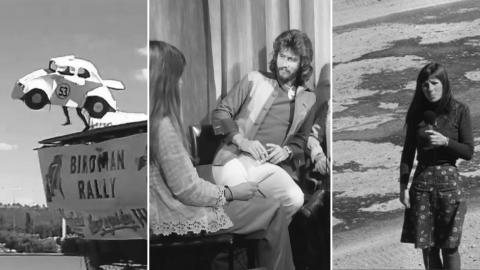
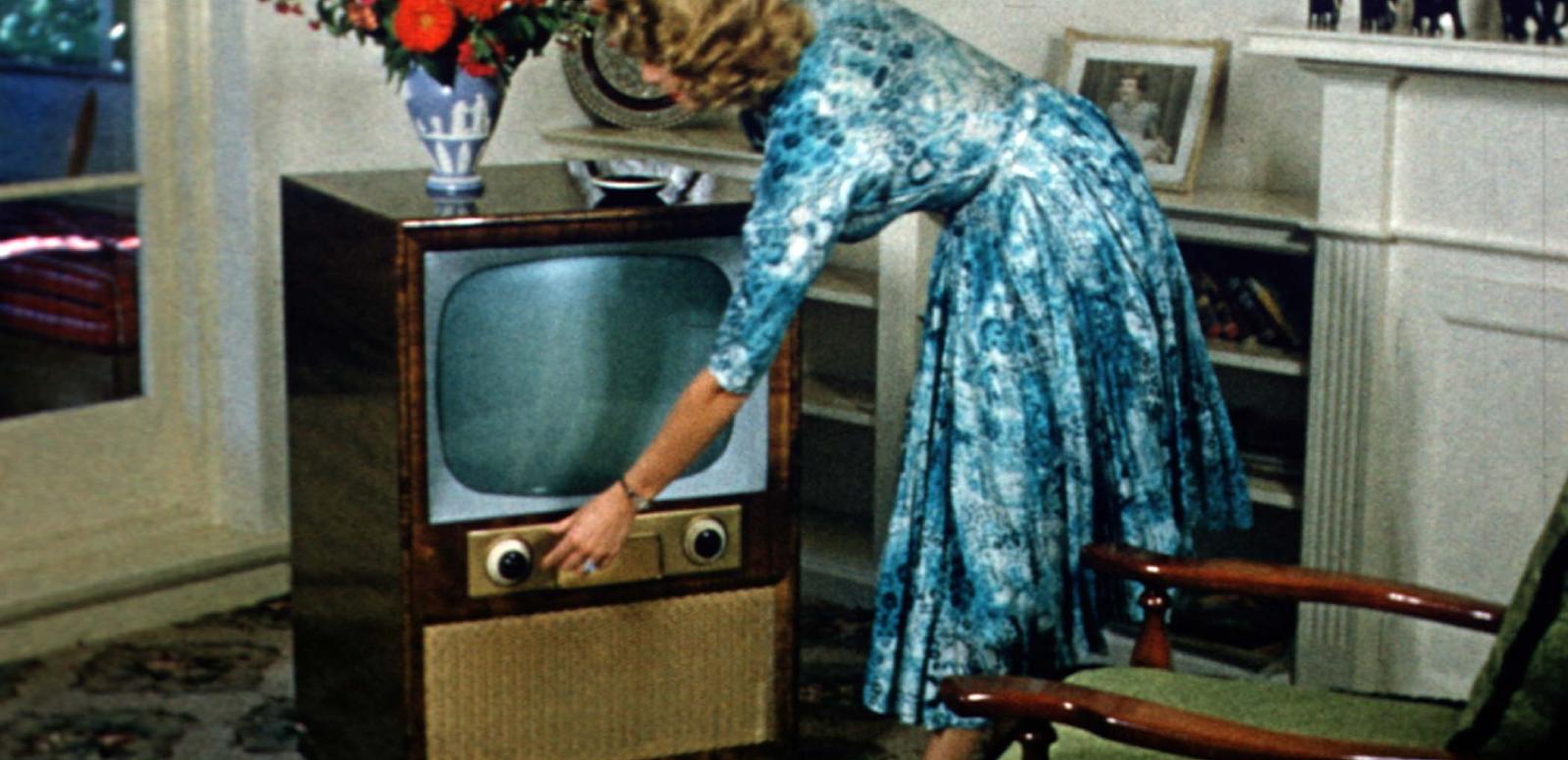
Colour TV in Australia, Part 2
Part Two
Television archivist Bronwyn Barnett continues her look at the arrival of colour TV in Australia 40 years ago, on 1 March 1975.
What did the TV stations’ colour tests look like? And why was Aunty Jack so opposed to colour TV?
Read Part One to learn why colour TV took so long to reach Australia and why government and industry finally agreed to make the switch from black-and-white.
Color vs colour: Throughout the planning stages for colour TV in Australia, newspapers and magazines often used the American spelling of ‘color’, perhaps because Australia was considering the American NTSC standard at the time. Later, the initial on-air promotions for colour TV originated in the US and also used ‘color’ instead of the more familiar ‘colour’.
‘Please adjust your colour television receiver’
To give broadcasters and viewers time to adjust to the new medium, the Australian Broadcasting Control Board (ABCB) advised that stations could transmit colour test patterns from 7 October 1974.
These test transmissions were for a total duration of one hour per day in 15-minute sessions:
Colour test pattern, STW9 Perth, 2 November 1974. Courtesy of Nine Network NFSA title: 411868
Newspapers also had question-and-answer columns providing advice on fine-tuning and technical issues (see, for example, The Sun-Herald , 13 October 1974).
From 19 October 1974, ABCB permitted stations four weeks of live color broadcasts for no more than four hours per week and no more than two hours per day. Colour commercials were also permitted during these color-casts. The ABCB specified that these first test broadcasts were to be sporting events1 or annual festivals, including:
- ABC: Day 3 NSW Open Golf Championship
- ATN 7, CTC TV: Manly Eagles vs Auburn Orioles baseball from Oriole Park, Sydney
- SAS 10, TVW7: Cricket: Gillette Cup Live: WA vs SA from WACA
- ATN 7: Castrol Six-Hour Motorcyle Race, Amaroo Park
- GTV 9: 1974 Melbourne Cup.
Due to the two-hour restriction, long sporting event broadcasts often began in black-and-white and switched to colour for the last two hours.
Channel 9 Perth’s first colour news bulletin is a significant title in the NFSA television collection. Not only is it the network’s first colour news bulletin, it is an example of a complete news bulletin from a time when few stations recorded and kept copies of their bulletins because of technical and cost limitations. The NFSA mostly holds individual news TV stories from this time rather than complete bulletins. A complete news program shows us how the bulletins looked and gives us a greater understanding of the limitations placed on broadcasters by the technology of the day (compared to today’s 24/7 news coverage).
Stations also used the colour broadcast tests to tantalise viewers with some of the programming they would be able to watch once colour television commenced:
Colour TV Demos, 1975. Courtesy Channel 7, Perth NFSA title: 775294
TV Week and newspaper television guides denoted the programs that were to be broadcast in colour.
A meat pie without sauce
The ABCB ordered a blackout of all colour broadcasting after 6 pm between 24 and 28 February 1975 so there was a big impact when ‘C-day’ finally arrived.
7 Perth: The First 50 Years, 2009. Courtesy of Channel 7, Perth NFSA title: 804156
Colour television revolutionised the industry. There was, however, one iconic Australian who was not too keen on the concept at first:
Aunty Jack Colour Day Special, 1975. Published with the cooperation of Grahame Bond and Rory O’Donoghue. Copyright ABC. NFSA title: 569666
At midnight on 1 March 1975, Aunty Jack, together with Thin Arthur and Kid Eager, confronted the ‘colour monster’ on ABC in a unique way. Rather than welcoming the chance to be in colour, Aunty Jack fights the change and Thin Arthur is terrified, mocking conservative attitudes in society that resist innovation. They sing a solemn rendition of ‘Wollongong the Brave’ in tribute to their hometown holding out against the shock of the new till the last possible moment. Colour is introduced in the above clip as a wash effect which gives Aunty Jack time and opportunity to fight it off for as long as she can. As Aunty finally succumbs to the magic, the grey tones of black-and-white seem dull against the vibrancy of colour. The effect demonstrates why colour television re-invigorated the industry and was embraced so quickly by Australian viewers.
The initial fears that there would be a slow uptake by Australian householders of colour television proved unfounded:
Bruce Gyngell interviewed by Brendan Horgan (1998), Oral History. NFSA title: 382977
Statistics released in the FACTS (Federation of Australian Commercial Television Stations) Annual Report for 1975-76 showed that ‘in only 18 months the penetration of colour television in Australia has reached a level that took eight years to achieve in the United States, seven years in Britain and five years in Japan’. It also reported a 5% increase in the number of homes watching television and that people were watching for longer periods each day.
In 1956, television was introduced to Australia in time for the Olympic Games in Melbourne. Now it was the 1976 Olympic Games in Montreal that contributed to the high uptake:
From 20 Years of Television (1976). Courtesy of Nine Network NFSA title: 37401
Thanks to colour the Australian television industry was attaining record profit levels with the costs of conversion offset by the increase in advertising and commercial production rates. With studies in the US showing a 55% increase in brand recall when a commercial was shown in colour2 , advertisers embraced the new medium. As Eric McRae, Tasmanian Television Ltd’s managing director, stated in a 1978 newspaper interview, ‘We’ve also found that as a result, quite a lot of new product categories have come our way, just because of the color [sic] facility. It’s awakened a new interest in television advertising – advertisers are more excited and there’s more attention from the public.’3
Stations were keen to show their new colour facilities to existing and potential clients as can be seen in this brochure for CTC-TV’s new colour studio complex in the Canberra suburb of Watson:
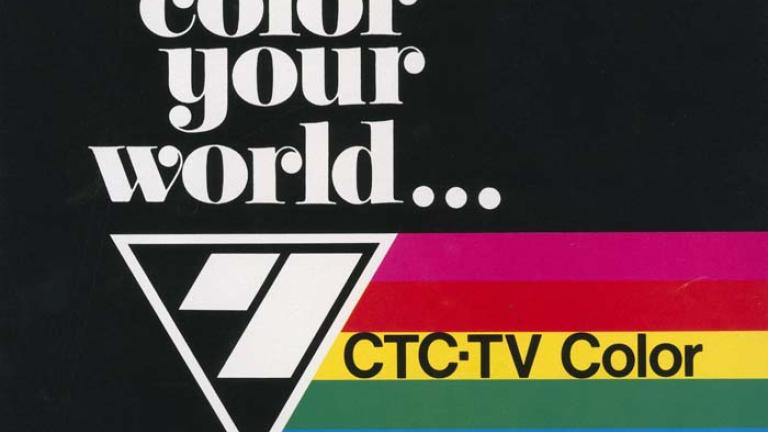
Color Your World: CTC-TV Color, p1
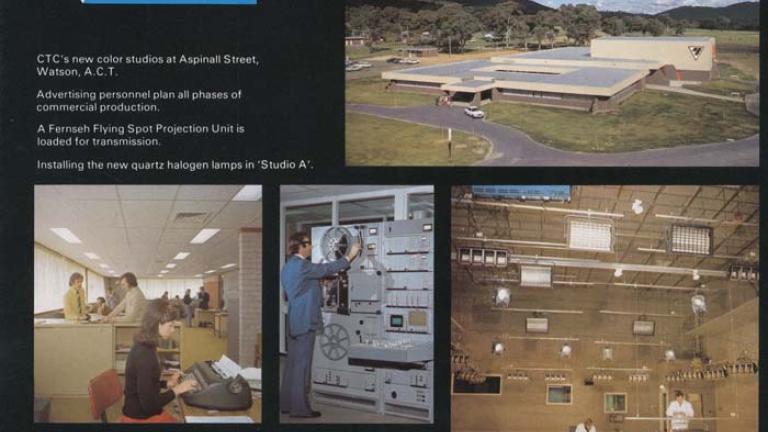
Color Your World: CTC-TV Color, p2
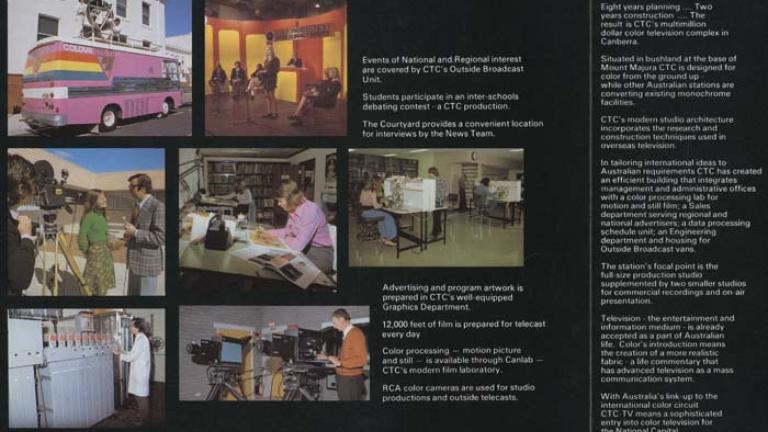
Color Your World: CTC-TV Color, p3
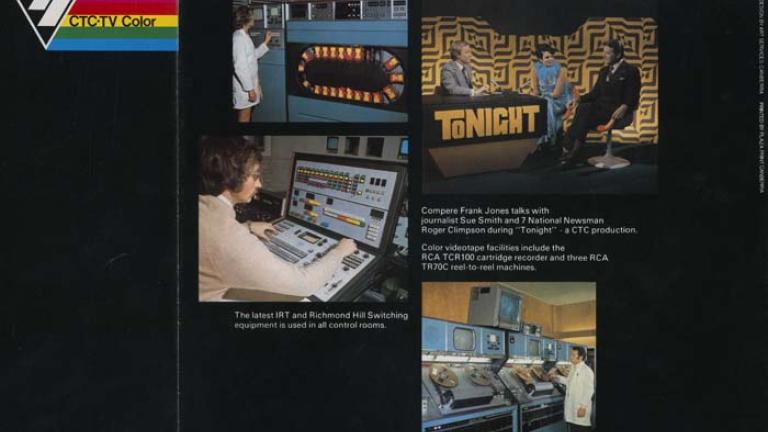
Color Your World: CTC-TV Color, p4
Color Your World: CTC-TV Color brochure from the Eric McRae Collection. NFSA title: 1292784
Broadcasters weren’t the only ones benefiting financially from colour television. The Rugby League signed its richest TV contract, seeing colour television coverage as ‘the greatest boost in the code’s history’4. Teams even added more colour to their uniforms to make the most of the colour broadcasts.
Whilst it may have taken over a decade for colour television to finally arrive in Australia, its impact was revolutionary. Australian television viewers’ worlds had now been coloured and, as TV Week’s Martin King put it, ‘…once you’ve seen color TV you will be hooked … and the old monochrome set will seem like eating a meat pie without sauce’5.
References
1The Sun-Herald, 2 June 1974.
2ANZ Colour Television in Australia report.
3The Mercury, 7 June 1978.
4The Sun-Herald, 2 March 1975.
5King, Martin ‘The Great Color Blast-Off!’, TV Week, 1 March 1975.
The National Film and Sound Archive of Australia acknowledges Australia’s Aboriginal and Torres Strait Islander peoples as the Traditional Custodians of the land on which we work and live and gives respect to their Elders both past and present.
